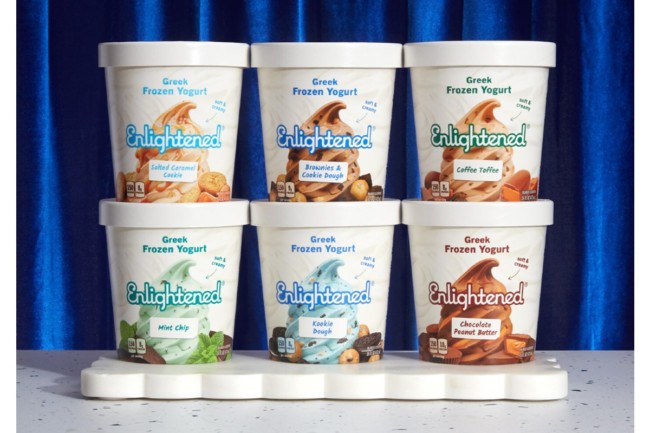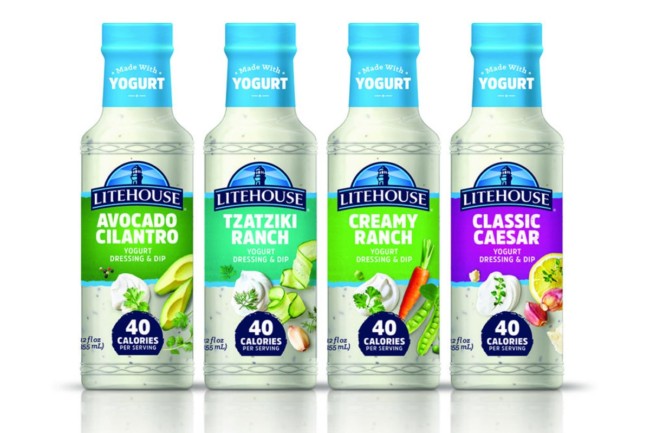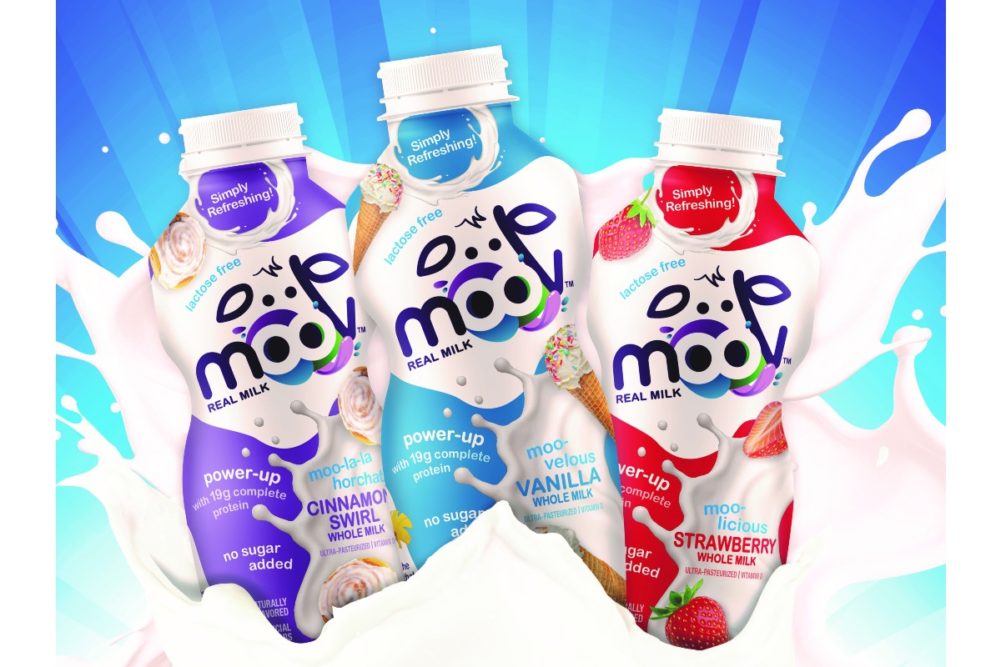Healthy is a voluntary descriptor that the US Food and Drug Administration (FDA), Washington, DC, is working to make more meaningful in the world of food and beverage marketing. The agency’s proposed framework for the term is all about ensuring that nutrient-dense foods that help consumers build a diet consistent with current dietary recommendations can qualify to bear the claim.
To meet the proposed definition, a food product would need to contain a certain amount of food from at least one of the food groups or subgroups (e.g., fruit, vegetables, grains, dairy and protein foods) recommended by the 2020-2025 Dietary Guidelines for Americans. Use of the term would also set specific limits for added sugars, saturated fat and sodium.
The nutrient limits are where things get tricky for dairy. But there’s lots of opportunity to improve on what Mother Nature provides.
The 2023 Food and Health Survey from the International Food Information Council (IFIC), Washington, DC, showed that 40% of the 1,022 US adults surveyed equate “fresh” with being “healthy.” After fresh, 37% of respondents associate healthy with being low in sugar, 33% with a good source of protein, 30% with natural and 28% with a good source of nutrients. Older generations are more likely to mention low in sugar and low in sodium as being attributes of better-for-you foods, while younger generations associate descriptors such as organic and natural with healthy food.
Dairy foods can be all that and more. With today’s consumers interested in food as medicine, dairy processors are smart to hone in on promoting the inherent nutrition of milk, while reducing some ingredients and boosting others.
More than half (51%) of global consumers report they have increased their strong belief that foods and beverages can offer medicinal benefits, as compared to two years ago, according to proprietary research from HealthFocus International, Des Plaines, Ill. Consumers feel foods and beverages are safer and more effective than prescription medication for maintaining health and preventing illness.
“Consumers, in general, are highly interested in numerous functional benefits, with immunity, energy, bone health, digestion, healthy aging, mood and focus being some of their top priorities when choosing foods and beverages,” said Cali Amos, human insights manager at HealthFocus.
This is particularly true with Gen Z. This cohort became aware of the connection between health and food at a much younger age than previous generations thanks to COVID-19.
“They are the only modern generation impacted so intensely by a health scare as youths,” said Barb Stuckey, chief innovation and marketing officer, Mattson, Foster City, Calif. “They see food as health, with mental health just as important as physical health. They look for functionality from everything they eat and drink. Gen Z consumers spend a greater percentage (20%) of their money on food than previous generations at the same age.”
Winnie Liu, senior food scientist at Mattson, added, “Gone are the days of eating just to eat. Food is expected to supplement and nurture the body while balancing and supporting a healthy, strong mind.”
Sugar is going down
Reducing and eliminating added sugars is paramount to keeping dairy products relevant in the better-for-you food movement. Many dairy processors are already there.
“Everyone is watching their sugar intake,” said Stuckey. “Sugar reduction is a trend that is here to stay. It’s a big business.”
That’s because Americans, on average, consume almost 152 lbs of sugar each year, according to the US Department of Health and Human Services, Washington, DC. The added sugar intake story is even more grim for children. This presents an opportunity for dairy processors to get added sugar out of kids’ favorite dairy foods, such as flavored milk and yogurt.
“US children consume 66 grams of added sugar per day, on average,” said Stuckey. “That is about 53 lbs, or the equivalent of a bathtub of sugar per year.”
Mattson worked with Clover Sonoma, Petaluma, Calif., to develop Clover the Rainbow Milk with a Splash of Flavor. The organic 2% lactose-free milk comes in chocolate, strawberry and vanilla varieties and is designed for kids and kids at heart. It’s free of any artificial flavors or sweeteners and is a good source of calcium and protein.
Clover Sonoma adds lactase to the milk before processing in order to make the lactose-free claim. The lactase enzyme breaks down lactose, a disaccharide, into its constituent monosaccharides, glucose and galactose, which are sweeter tasting than lactose. The company then couples this enzyme technology with natural flavors and flavor modulators to enable low- and no-added sugar claims on its new flavored milk line.
Breaking down the lactose also makes the product easier to digest for those with lactose intolerances or sensitivities. When lactose does not break down in the small intestine, it passes into the large intestine, where it may cause diarrhea, bloating and gas. Eliminating lactose contributes to a better-for-you image.
Dari LLC, Clinton, Wis., is also active in this space with its new ultra-filtered, lactose-free, whole milk beverage named MOO’V. It is a high-protein, low-sugar beverage designed to deliver optimized nutritional benefits to kids. Flavors for the new product include cinnamon swirl horchata, strawberry cream and vanilla ice cream. Each 14-oz grab-and-go bottle provides 19 grams of protein and only 7 grams of naturally occurring sugars.
“Knowing there is a growing need for healthy and functional drinks, especially for kids, this is the time for the dairy industry to step in and revolutionize the space with the power of real milk,” said Dan Ellsworth, chief executive officer. “We have been very pleased with the reactions from parents regarding the nutritional benefits of MOO’V.”
Another way to eliminate or reduce added sugars in sweetened dairy products is to use premium fruit ingredients. That’s because, like milk, the sugars in fruit are intrinsic. Single-strength fruit ingredients, such as purees, are not considered added sugars. Statements such as “naturally sweetened with real fruit” have consumer appeal. The IFIC survey showed that 28% of respondents equate healthy with foods that contain fruits or vegetables.
 Photo: Enlightened
Photo: EnlightenedBoosting protein
Being a good source of protein is also associated with healthy foods, according to a third of the 2023 IFIC survey respondents. The survey also showed that more than half (52%) of Americans are following an eating pattern or diet, with high protein being the most popular (selected by 18% of respondents).
Designer Protein, Carlsbad, Calif., is growing its Designer Wellness Protein Smoothie line with three new flavors – blueberry vanilla, peach mango and raspberry passion fruit – joining mixed berry, strawberry banana and tropical fruit. Each 4.2-oz shelf-stable smoothie pouch contains 12 grams of whey protein isolate and no added sugars, thanks to the use of real fruit. The smoothies also contain medium-chain triglyceride oil, which is purported to improve brain and memory function, as well as other wellness benefits.
Greek yogurt’s higher protein content positions it as a better-for-you base in dairy products such as dips, dressings and frozen desserts. This past summer, Litehouse Inc., launched a new line of refrigerated yogurt-based lower-calorie creamy dressings in four of the brand’s most popular flavors: avocado cilantro, Caesar, ranch and tzatziki ranch.
 Image: Litehouse Inc.
Image: Litehouse Inc.“At Litehouse, we believe you should never have to sacrifice taste,” said Krystle Turnbull, product manager. “These new yogurt-based creamy dressings offer consumers a way to indulge in their favorite flavors at just 40 calories per serving.”
Enlightened, the first and largest brand within Beyond Better Foods, a New York City-based company founded by Forbes Under 30 alum Michael Shoretz in 2012, is shaking things up in the freezer with new Greek Frozen Yogurt Pints. Enlightened was one of the first light ice creams on the market. These new pints are an upgraded version with added texture, taste and nutritional value.
Enlightened’s new pints are made with premium probiotic Greek yogurt. One serving contains 150 calories or less, 8 to 10 grams of protein and minimal added sugar.
“After seeing our customers’ response to our Greek yogurt bars earlier this year, we knew we had to try a pint version,” Shoretz said. “We strive to make the best-tasting low-sugar treats by constantly adapting and improving.”
One of the varieties – Kookie Dough – is uniquely colored blue by using the natural coloring spirulina. Artificial colors are another no-no in the world of better-for-you foods.
All of these products promote protein content, specifically dairy proteins, which are high-quality, complete proteins. This means they contain the necessary amounts of all the essential amino acids required by the human body to function at its best. Whey protein, specifically, is seen as higher quality because of the presence of leucine, a branched-chain amino acid accountable for muscle synthesis.

